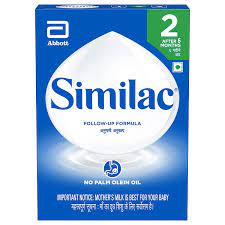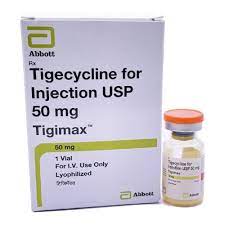Amoxyclav 625 Tablet
AMOXYCILLIN + CLAVULANIC ACID
Amoxyclav 625 Tablet is a powerful antibiotic used to combat various bacterial infections. This medication is a crucial player in treating conditions ranging from respiratory infections to urinary tract issues.
Amoxyclav 625 Tablet 10s is a combination of two key components Amoxicillin, a potent βlactam antibiotic, and Clavulanic Acid, a βlactamase inhibitor This dynamic duo works together to eliminate susceptible bacteria.
Amoxyclav 625 Tablet 10s is a versatile medication employed to treat or prevent infections caused by susceptible bacteria Common applications include, Urinary tract infections, Respiratory tract infections, Skin and soft tissue infections, Sinus infections, Tonsillitis, Cat scratches, Dental infections, Infected animal and human bites.
It's also recommended for drug-resistant tuberculosis when used in combination with meropenem.
Its dosage and duration depend on the severity and type of infection. Always follow your healthcare provider's instructions for optimal results.
Though rare, adverse effects like cholestatic jaundice and Stevens-Johnson syndrome/toxic epidermal necrolysis have been associated. Report any unusual symptoms promptly.
Avoid it, if you have a history of penicillin allergy. Inform your doctor about your complete medication list, including vitamins and herbal supplements.
If you miss a dose, don't panic. Contact your healthcare provider immediately for guidance. It's essential not to double up on doses without professional advice.


Can I stop taking Intra-Clav when my symptoms are relieved?
It is important not to discontinue the use of IntraClav prematurely even if you start to feel better Although your symptoms may improve it is crucial to complete the full course of treatment in order to fully eradicate the infection By continuing to take the medication as prescribed you can ensure that the medicine continues to exert its beneficial effects and completely eliminate the infection It is not uncommon for symptoms to improve before the infection is completely cured so it is essential to follow the recommended treatment duration Abruptly stopping the medication without completing the course can lead to the reemergence of the infection as well as potentially contribute to antibiotic resistance Therefore it is advised to adhere to the prescribed treatment plan and consult with your healthcare provider if you have any concerns or questions Your healthcare provider will be able to provide further guidance and reassurance regarding the importance of completing the full course of treatment with IntraClav

Can the use of Genomox CV cause diarrhea?
The use of Genomox CV has the potential to lead to the development of diarrhea This particular medication is classified as an antibiotic specifically designed to eliminate harmful bacteria within the body However it is important to note that Genomox CV can also affect the presence of beneficial bacteria in the stomach and intestines resulting in diarrhea as a potential side effect If you find yourself experiencing diarrhea it is crucial to ensure that you remain properly hydrated by consuming ample amounts of water or other fluids Additionally if the diarrhea persists and you notice any symptoms of dehydration such as reduced frequency of urination accompanied by darkcolored and strongsmelling urine it is highly advised to consult with your healthcare provider Refrain from consuming any other medications without obtaining proper guidance and approval from a medical professional

What is Maxclave?
Maxclave is a potent amalgamation of two powerful medications namely Amoxycillin and Clavulanic acid This exceptional combination renders it highly effective in combating a wide spectrum of bacterial infections By utilizing the synergistic properties of both drugs Maxclave has become a formidable weapon in the medical field Primarily Maxclave is prescribed for the treatment of various infections caused by bacteria These may include tonsillitis sinusitis otitis media respiratory tract infections urinary tract infections boils abscesses cellulitis wound infection bone infection and oral cavity infections Regardless of the severity or location of the infection Maxclave is designed to eliminate the harmful bacteria responsible for the ailment The mechanism of action of Maxclave revolves around its ability to exterminate the bacteria causing the infection Amoxycillin a potent antibiotic targets the bacterial cell wall and disrupts its synthesis leading to the destruction of the bacteria Clavulanic acid on the other hand works in synergy with Amoxycillin by inhibiting certain enzymes produced by bacteria that can deactivate the antibiotic This dual action ensures that the bacteria cannot survive and replicate allowing the bodys immune system to effectively eliminate the infection In conclusion Maxclave is a dynamic medication that harnesses the combined strength of Amoxycillin and Clavulanic acid to combat a broad range of bacterial infections Its ability to effectively kill harmful bacteria makes it a soughtafter choice for healthcare providers in the fight against infections

Can the use of Inclab cause contraceptive failure?
Inclab when used concurrently with birth control pills has the potential to reduce their effectiveness It is crucial to consult with your doctor and obtain guidance on alternative forms of contraception such as condoms diaphragms or spermicides while incorporating Inclab into your medication regimen Prioritizing your sexual health and considering the potential interactions between medications is essential in ensuring reliable and comprehensive contraception Your healthcare provider will be able to provide tailored recommendations based on your individual needs and medical history taking into account any possible contraindications or interactions that may arise Open communication and collaboration with your doctor will empower you to make informed decisions regarding your contraception and ultimately contribute to your overall wellbeing By exploring alternative contraceptive methods and working closely with your healthcare professional you can maintain optimal protection while being mindful of the potential impact of Inclab on the efficacy of birth control pills

Can the use of MX cause contraceptive failure?
It is important to note that the utilization of MX has the potential to decrease the effectiveness of birth control pills To ensure optimal contraceptive measures it is strongly advised to consult with your healthcare provider and obtain their guidance regarding alternative methods of contraception Some alternative options may include utilizing condoms diaphragms or spermicides while taking MX Taking this precautionary approach can greatly reduce the risk of unintended pregnancies and provide you with muchneeded peace of mind So make sure to have an open and honest conversation with your doctor to explore the most suitable and reliable contraceptive methods to employ concurrently with MX usage Your healthcare provider will be able to offer personalized recommendations based on your specific needs and medical history ensuring that you can continue to protect against unintended pregnancies effectively while receiving the necessary treatment with MX

Is it safe to use Klyx?
When used as directed by a healthcare professional Klyx is considered safe for use It is crucial to follow the prescribed dosage and instructions provided by your doctor Although generally welltolerated some individuals may experience certain side effects while taking Klyx These commonly reported side effects include diarrhea nausea vomiting rash and allergic reactions However it is important to note that there are also potential uncommon or rare side effects that may occur If you encounter any persistent issues or adverse reactions during your treatment with Klyx it is imperative to promptly notify your doctor They can evaluate your condition and determine the appropriate course of action It is essential not to ignore any concerning symptoms as your doctor can provide the necessary guidance and adjustments to your treatment plan if needed Remember that every individuals response to medication may vary While some people may experience side effects others may not experience any at all Your doctor is the best person to assess your specific situation and address any concerns you may have By maintaining open communication with your healthcare provider you can ensure the safe and effective use of Klyx












.svg)
